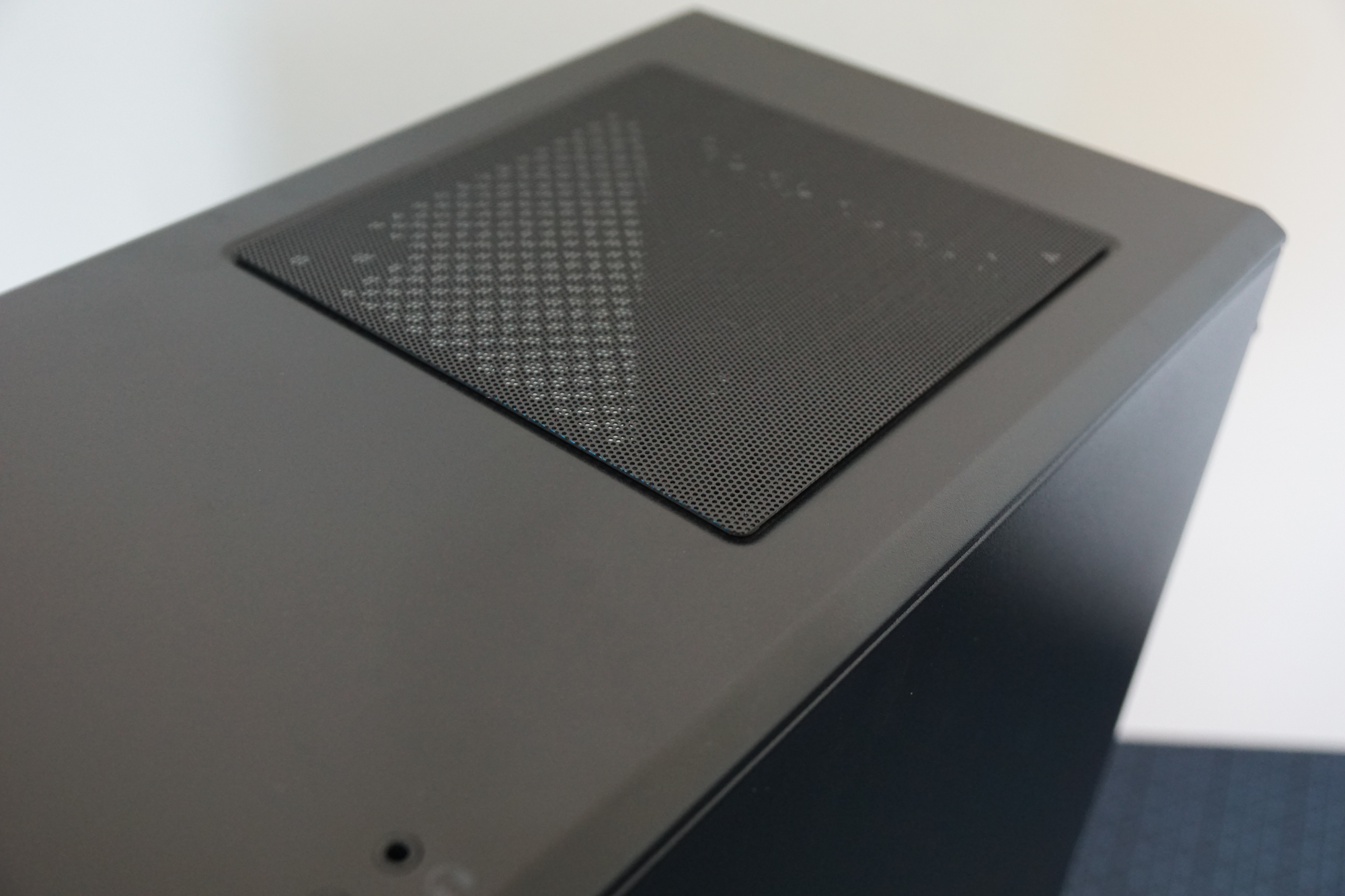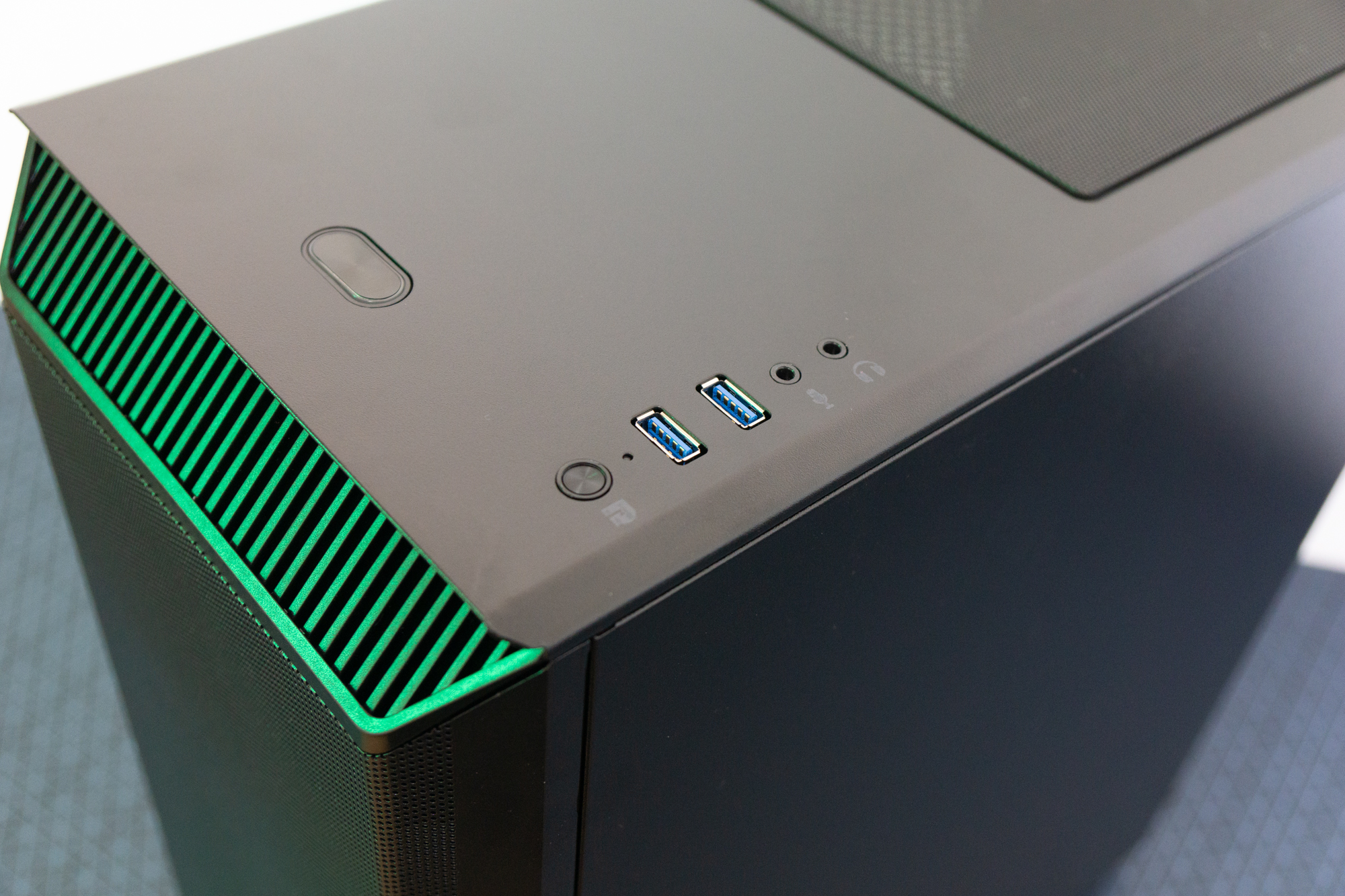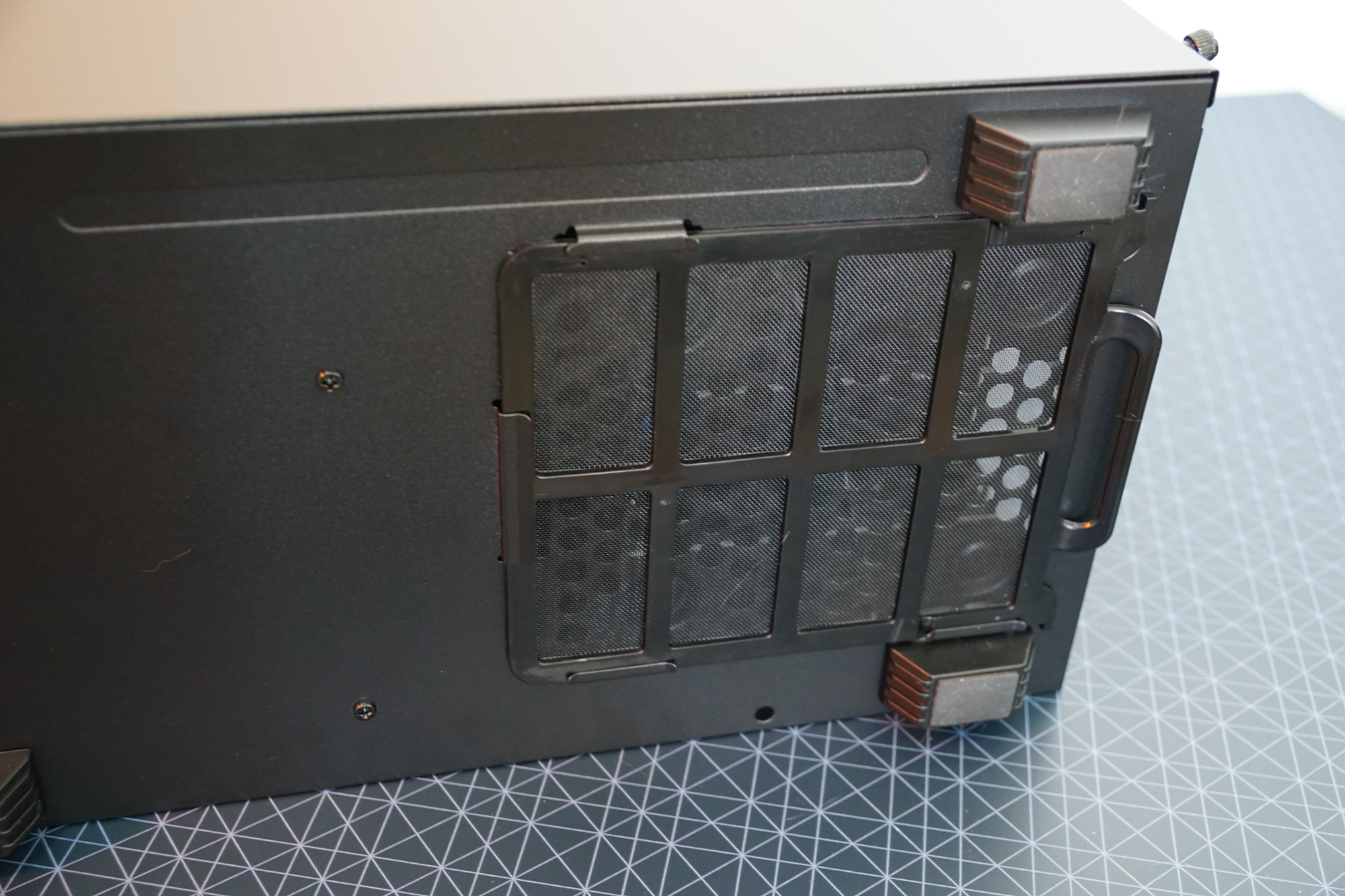Tom's Hardware Verdict
If the Phanteks Eclipse P300A had a motto, it would be "less is more." It succeeds at what it aims to do well and is an excellent choice for a beginner builder. It's a simple, minimalist budget chassis at a nice price.
Pros
- +
Cheap
- +
Great airflow
- +
Easy to work in
- +
Universal good looks
Cons
- -
Loud performance under load
- -
Only ships with one fan
- -
Big PSUs won't fit
- -
No USB Type-C
- -
No RGB (a pro, for some)
Why you can trust Tom's Hardware
Dutch case, cooling, and PSU manufacturer Phanteks offers up the Eclipse P300A, an airflow-optimized variant of the P300, ditching the RGB lighting and adding a front mesh intake. This new front facade should do the case some favors in terms of temperatures, but the chassis only comes with one fan included, and that isn’t much.
But the basic setup also means the price is low; you can buy yourself the Phanteks P300A for just $60, which might just make you forgive it for its lack of included extras. At this price, the company is targeting the entry-level builder who wants an ATX chassis that cools well and isn’t overly designed or flashy. There’s a lot to like here, but will the P300A make it to our best PC cases list? First, let’s take a close look at the Eclipse P300A’s specs.
Specifications
| Type | Mid-Tower ATX |
|---|---|
| Motherboard Support | Mini-ITX, Micro-ATX, ATX |
| Dimensions (HxWxD) | 17.72 x 7.87 x 15.75 inches (450 x 200 x 400mm) |
| Space Above Motherboard | 1.18 inches (30mm) |
| Max GPU Length | 14 inches (355mm) |
| CPU Cooler Height | 6.5 inches (165mm) |
| Max PSU Length | 200mm |
| Weight | 13.2 pounds (6.0 kg) |
| External Bays | ✗ |
| Internal Bays | 2x 3.5-inch, 1x 2.5-inch (2x with optional bracket) |
| Expansion Slots | 7x |
| Front I/O | 2x USB 3.0, 3.5 mm Audio, 3.5mm Mic |
| Other | Tempered Glass Panel |
| Front Fans | None (Up to 2x 140mm) |
| Rear Fans | 1x 120mm (Up to 1x 120mm) |
| Top Fans | None (Up to 1x 140mm) |
| Bottom Fans | ✗ |
| Side Fans | ✗ |
| RGB | No |
| Damping | No |
| Warranty | 2 years |
Features
When unpacking the Phanteks P300A, it’s clear you’re dealing with a very basic chassis with hardly any features that you don’t strictly need. The tempered glass side panel is the primary aesthetically focused feature. There is no RGB lighting, but you’ll find a subtle white line that lights up at the bottom right of the glass panel that looks quite neat.
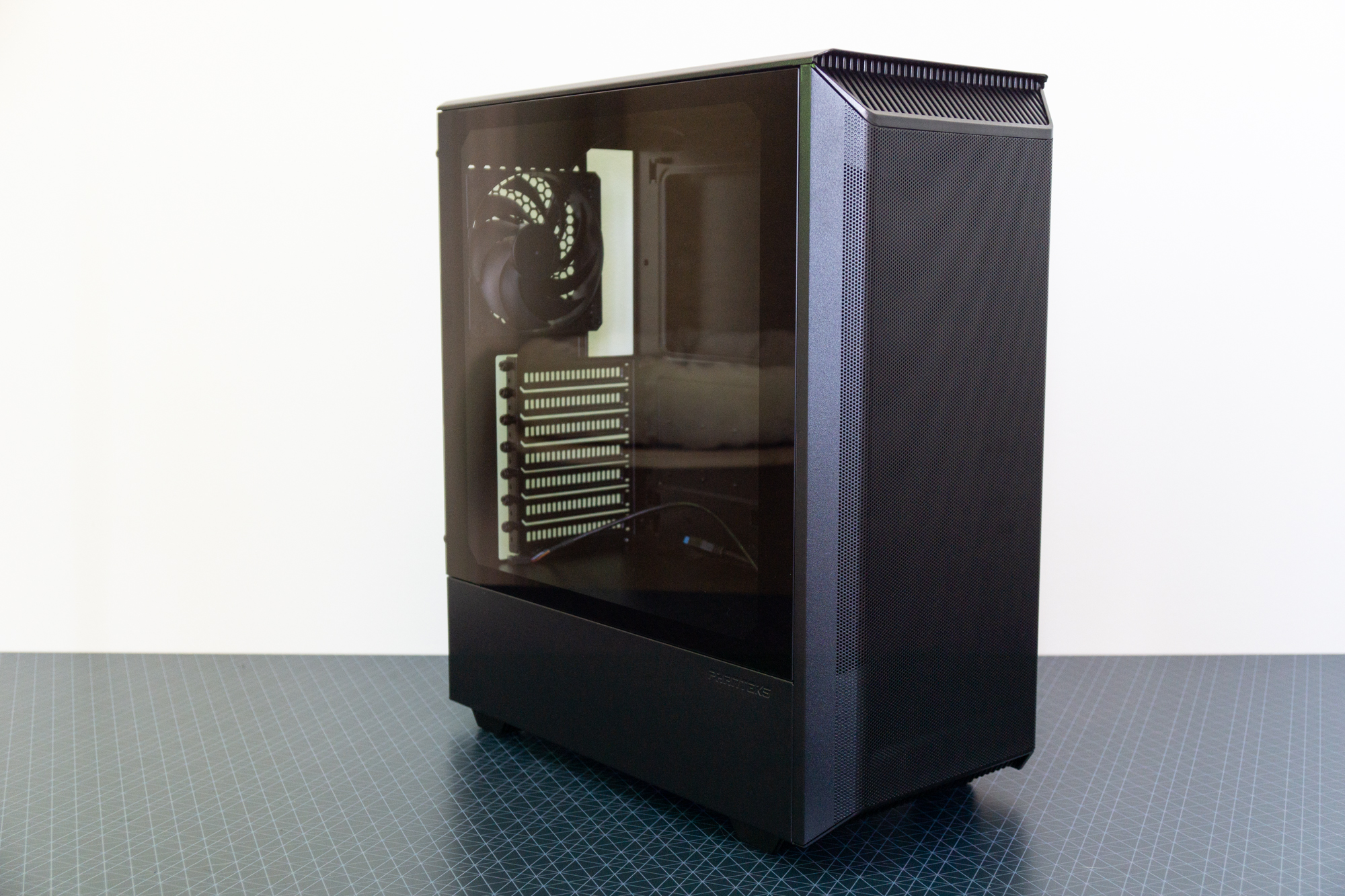
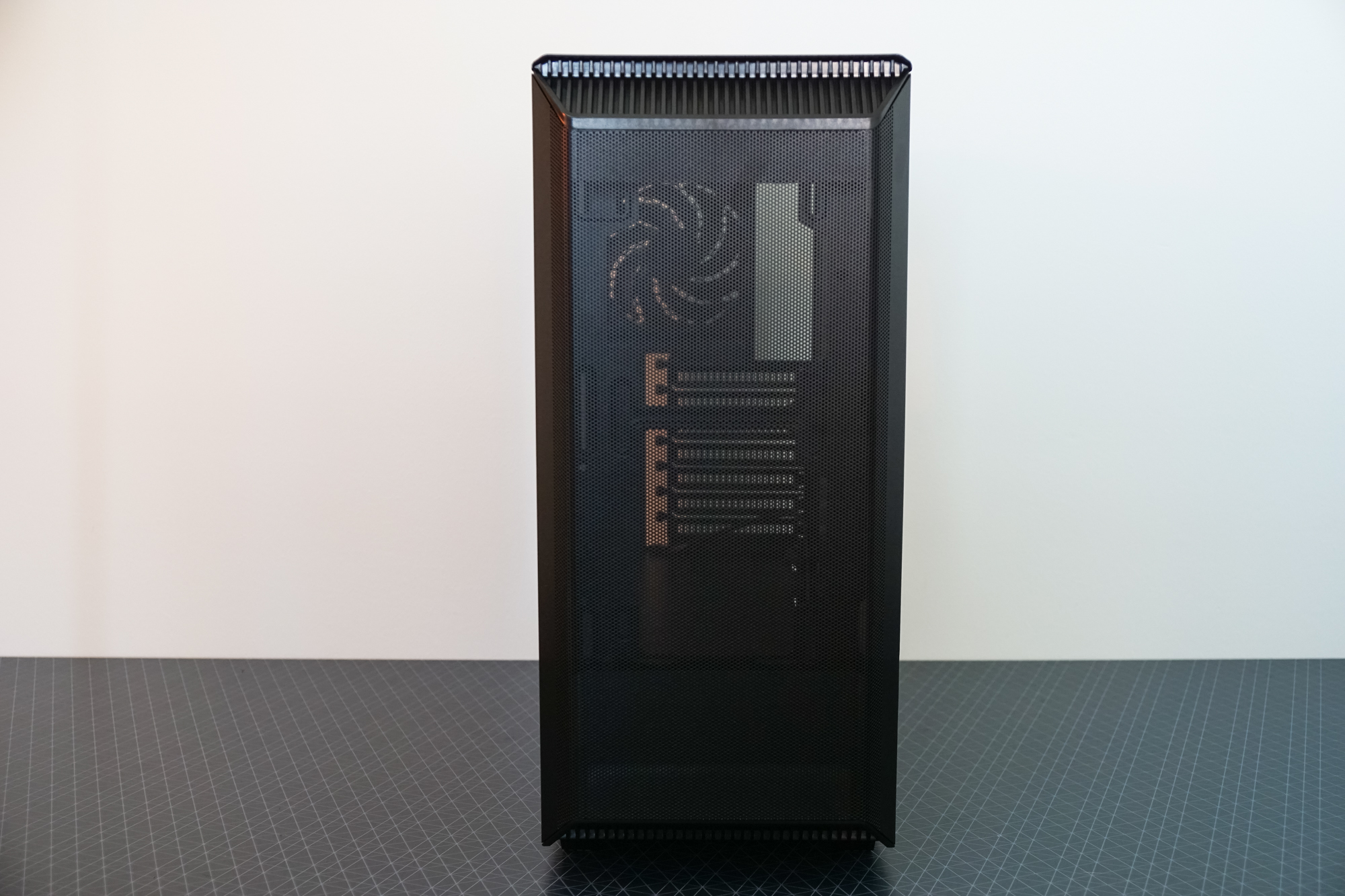
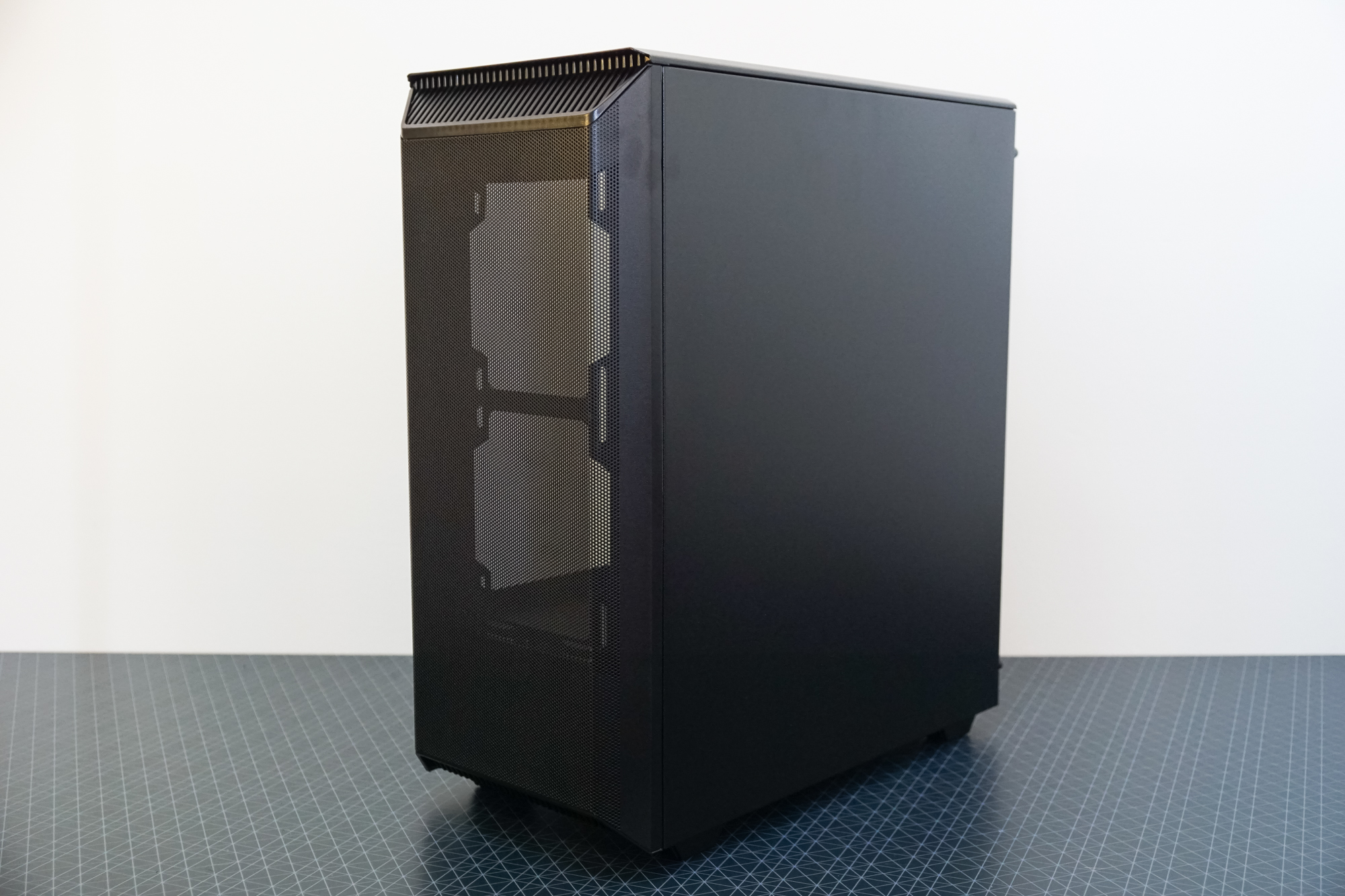
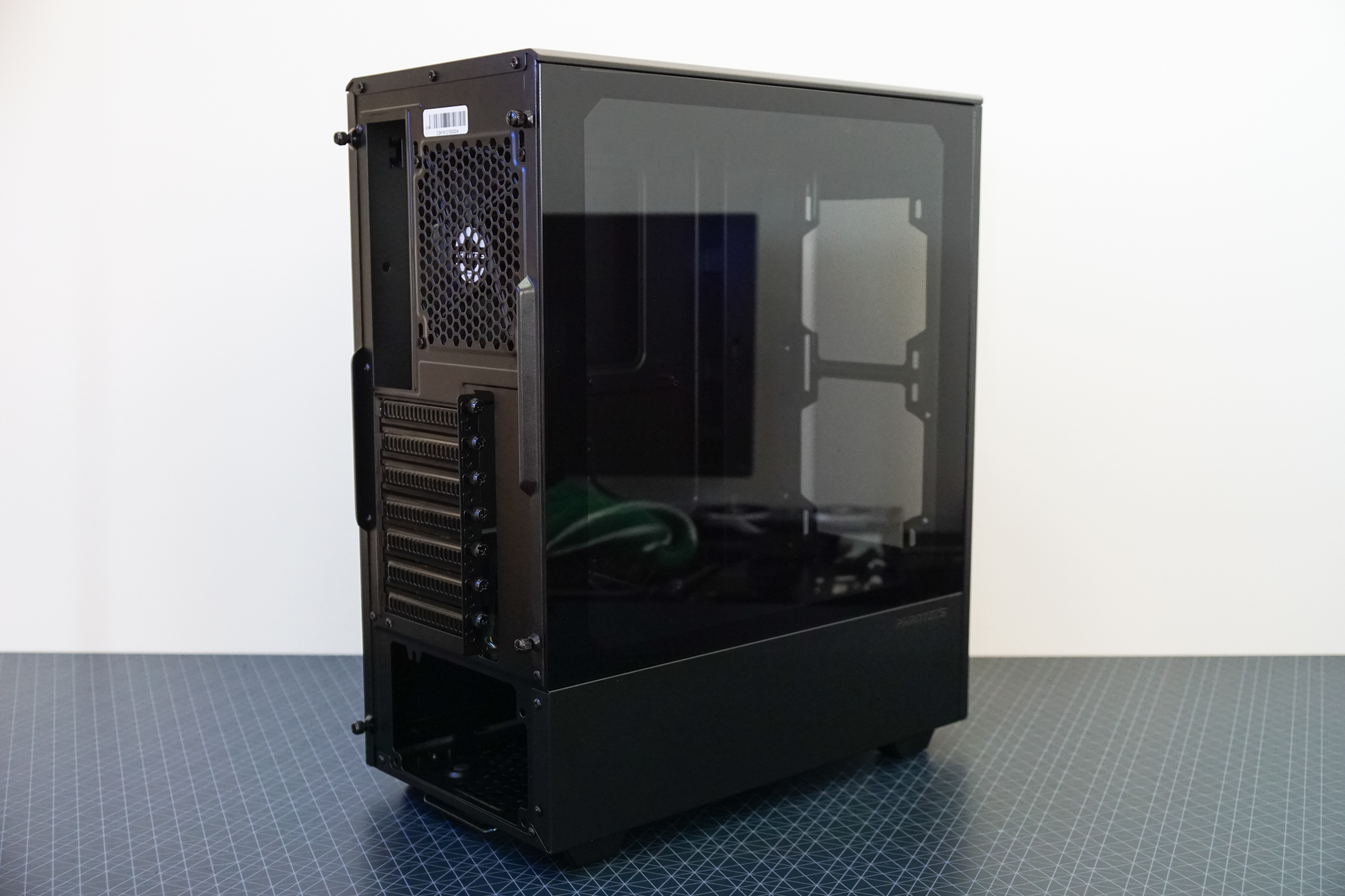
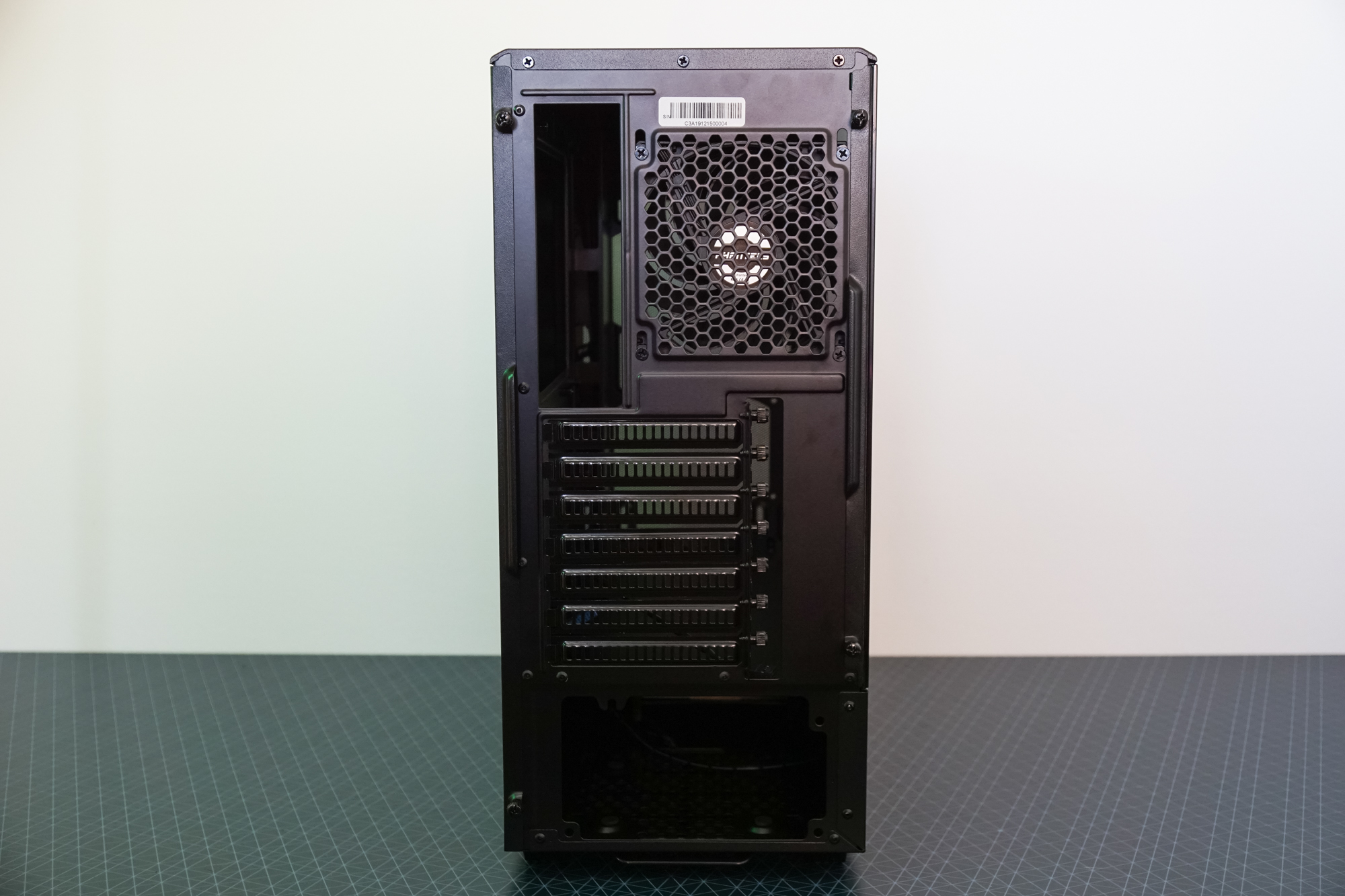
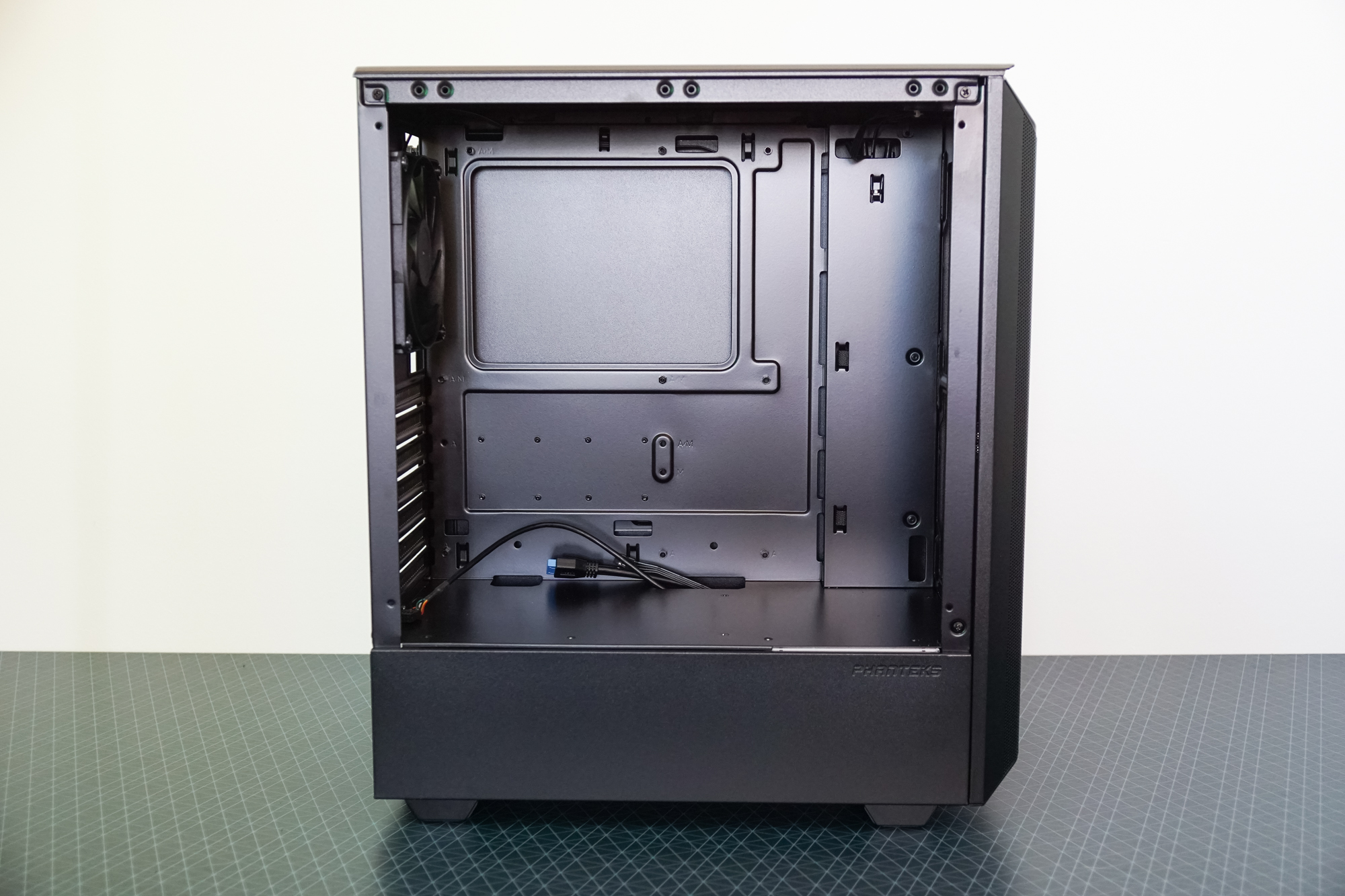
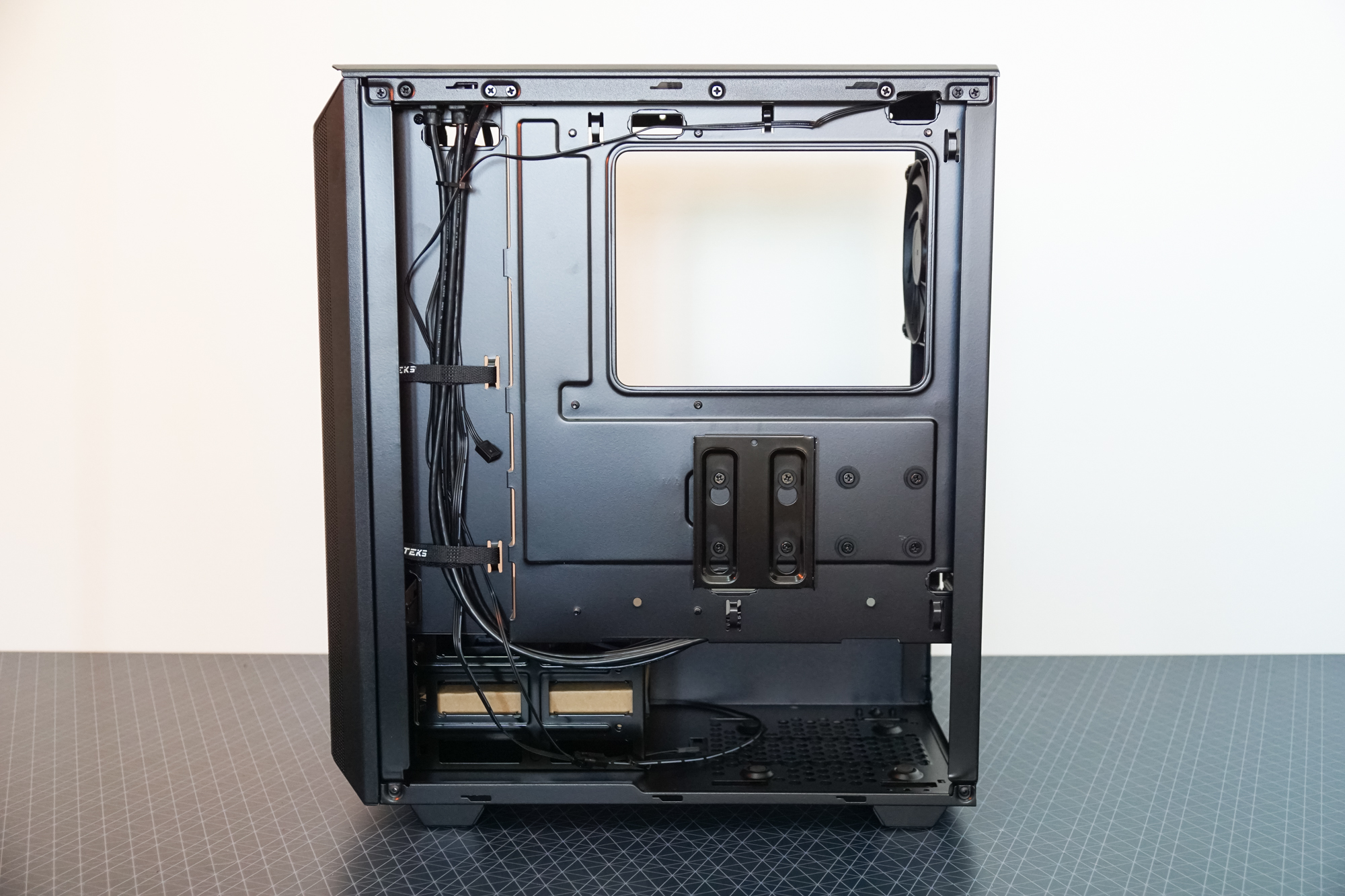

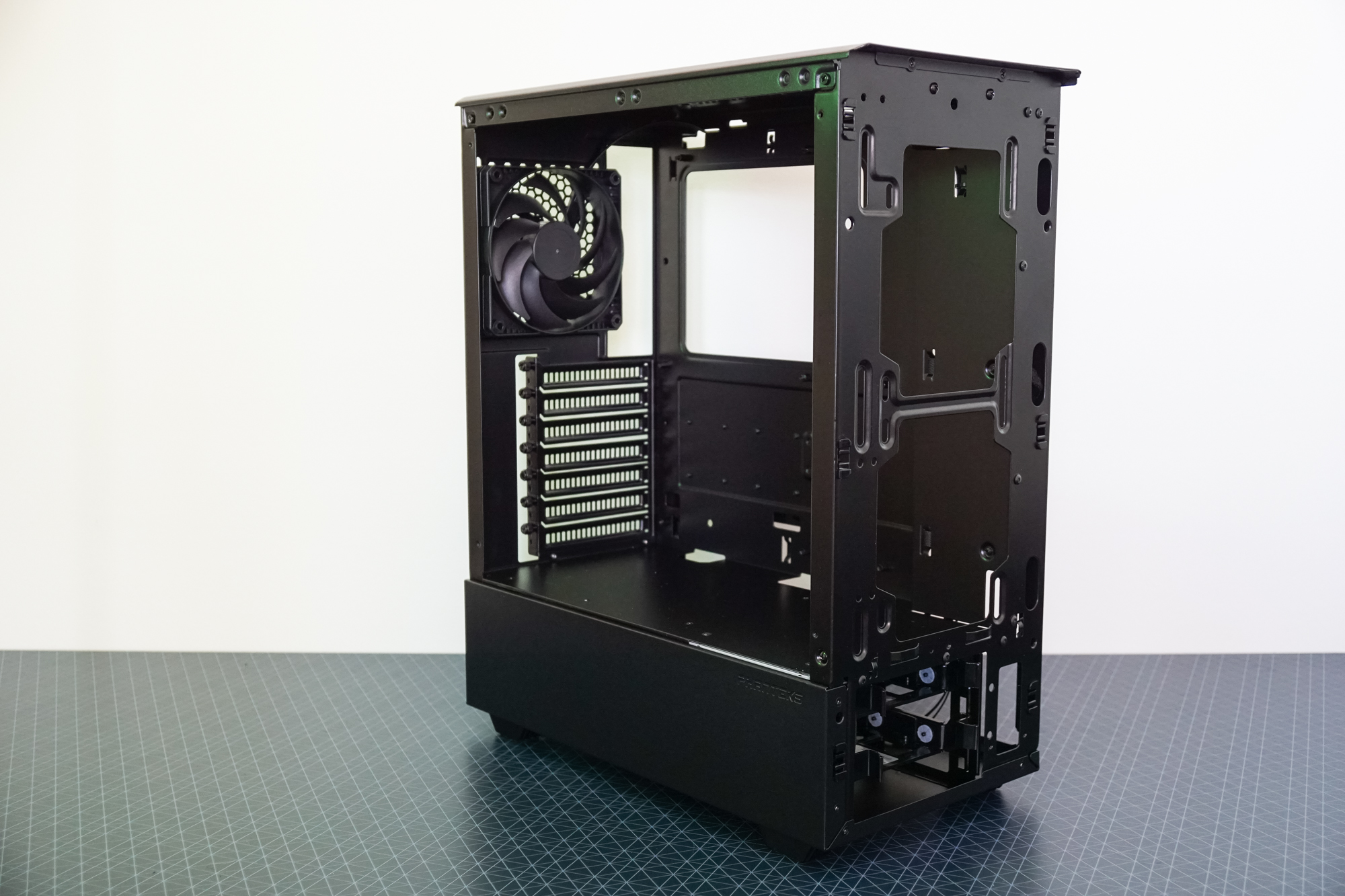
In terms of size, the P300A is about as compact as an ATX chassis gets. Gone are the days where we need 5.25-inch external bays and tons of hard drives. This chassis stands out by being one of the smallest “normal” ATX mid-towers around.
At the top of the chassis is a magnetic mesh panel to hide the screws to attach a fan. It’s a nice touch, but it slides out of place easily and doesn’t fall into its cavity as nicely as in other cases. Both the right side/back panel and the tempered-glass panel feature thumbscrews at the rear and slide off the chassis for removal. Most glass panels come with thumbscrews on the side to secure them, but despite being a budget case, Phanteks has opted for a sliding mechanism here. This is less finicky in use and results in a flush side profile, adding to the minimalist appeal.
The front I/O resides at the front of the top of the chassis, consisting of two USB 3.0 ports, separate mic and headphone jacks, along with power and reset buttons. There is no USB Type-C here, but this is just a $60 case, and front-panel USB-C headers are still somewhat rare-especially on the kind of budget boards you’re likely to pair with a case that’s this affordable.
Internal Layout
Internally, the Phanteks P300A is simple. In the main motherboard compartment you’ll find space for the motherboard, graphics card, and associated cooling components and no more.
Get Tom's Hardware's best news and in-depth reviews, straight to your inbox.
Underneath the power supply shroud is space for the PSU as well as two 3.5-inch drives. The case also supports two more 2.5-inch drives behind the motherboard tray. But a bracket for just one drive is included in the box.
Cooling
For cooling, the chassis comes with one 1200 RPM fan that uses voltage control for regulation (3-pin). This is a simple budget fan for a budget case, but it seems to perform adequately as we found in our testing. Still, for most builds you’ll probably want to add at least one more spinner.
The top of the chassis can support a 140 mm fan, though we wouldn’t install a 140 mm radiator here as it will likely lead to clearance problems with tall VRM heatsinks. The front of the chassis supports up to two 120 mm or 140 mm fans, and while a 240 mm radiator will fit, you’ll likely run into some clearance problems with larger 280 mm units.
Phanteks opted to include only an air filter at the bottom of the chassis for the PSU intake, explaining that the front mesh is so fine that it acts as a filter. This should, in theory, reduce intake drag and therefore improve temperatures, though with all the gaps around the chassis, we would still expect some dust buildup. The front panel comes off easily without much force for cleaning and accessing the fan mounts and HDD caddy.
Niels Broekhuijsen is a Contributing Writer for Tom's Hardware US. He reviews cases, water cooling and pc builds.
-
Soaptrail I recently built my relative a PC with this case and having no experience with Phanteks I came away thoroughly impressed. This case looks great and is very easy to install with although i did add a second fan.Reply
My only knock come from the PSU shroud not being removable but i am apparently in a small minority that does not mind seeing a PSU and cables. -
punkncat I own the older version of this case, before they went with the mesh front. It's a beautiful case that is well laid out, has ample room for expansion if you want...the "stock" configuration will allow for 4 drives readily. It's got great cable management options. In it's stock configuration the only air intake were two small strips on either end of the front panel, with dust filters. It was terrible for builds with any level of power, particularly GPU. My only complaint as far as design is (was) that the front LED wiring runs right by the mounting lug for the front panel. While taking that off to clean it eventually snagged and broke that wire. It's replaceable, but I don't use the case lighting function any more.Reply
I would point out that in my own experience the top fan mount location is only going to work with smaller radiators. The motherboard top edge and radiator or fan side are in conflict. The front mounting location is slightly oversized and big radiators will fit there.
The case had severe air flow and thus heat issues. They came out with the model reviewed above and the front panel is available as a separate part. I ordered that and instantly solved the aforementioned problems. Superb upgrade option for a good looking case.
